Click here to print
African American Home Movies: Are They Out There? Can You Help Locate Them?
posted December 2, 2014
A budding archivist is testing the notion that they are rare because they have rarely been made
n
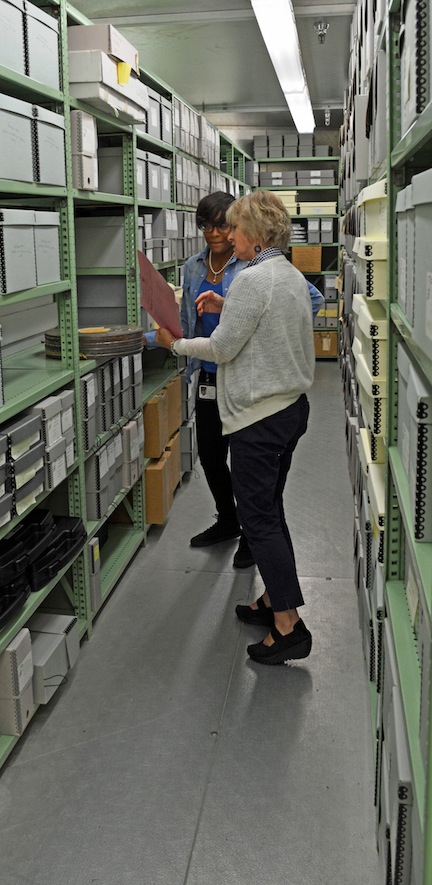
Jasmyn R. Castro, left, was an intern last summer at The Jimmy Carter Presidential Library, where her supervisor was Polly Nodine, the Library’s audiovisual archivist (right).
It is hardly novel to observe that film has served African America indifferently. In an industry that doesn’t shy away from stereotyping at the best of times, the roles most commonly assigned to actors of every non-majority racial, ethnic, and social group have been far less faithful to reality than to the reductions of prejudice.
Criminality has been the go-to mode, while the formerly few and now increasing number of television depictions of everyday African American family life have tended towards the saccharine and other implausible flavors.
Figuring that home movies would likely provide more realistic images of black life in the United States, Jasmyn R. Castro, a graduate student in the master’s degree program in moving image archiving and preservation at New York University, is on a quest to locate as many as she can.
That Castro is doing so would strike even most American film archivists as an unlikely undertaking, because the received opinion has long been that few African American home movies exist. She accepted, even as she set out, that she might come up with little, even though, as she says, “once I started talking with other archivists, researchers, filmmakers, and everyday people, I saw that there was a real thirst for this type of material.”
She concludes: “People want to know about these collections and have access to them, even if they don’t know it yet.”
The project looked to her like a good one for completing the thesis requirement of her NYU moving-image-archiving master’s degree, guaranteed not to balloon out of all proportion to the time available and the credit attached. Small but important is how she viewed her plan, which was to create a database of the reportedly few collections of films that African Americans have made about themselves. She was aware, she says, that given the standard, stereotyping portrayals of black Americans in Hollywood feature films, a now-well-established adage is hard to deny: To be faithfully presented in any form of media, African-Americans must control those media. That had been done to some degree in big-screen portrayals by big-name black film directors like Spike Lee and John Singleton, best known for Boyz n the Hood from 1991, or even the rich and evocative ones of, say, Charles Burnett whom the New York Times has called “the nation’s least-known great filmmaker and most gifted black director.” Her quest would be far smaller-scale films that capture everyday life in all its richness, surprise, purpose, and resolve.
In her thesis proposal to the NYU program, Castro wrote of the home movies of black Americans: “Their rare and scattered existence is a true testament to the importance of everyday depictions of minority communities. These home movies are historically significant and should be seen as a preservation priority, because they are a moving-image record of African-American home and social life at different points in time.”

Jasmyn R. Castro: “Once I started talking with other archivists, researchers, filmmakers, and everyday people, I saw that there was a real thirst for this type of material.”
She has been surveying the state of collecting of the films: which archives, libraries, and museums have films, and how many. That, and which ones have made collections of any size? And of what kind? She is entering that information into a database that will indicate the scope and content of these aggregations of home movies.
Something unexpected began to take shape as she proceeded in her research: She found that the common view even among specialists in African American history and culture that such films are rare, and have rarely been made, is not really correct. There are “a lot of myths surrounding the existence of African-American home movies,” she says from her New York home.
“Many people think that they’re rare or nonexistent, or that only famous and well known African-American figures, for example Martin Luther King Jr, Malcolm X, and Cab Calloway, could afford to partake in amateur filmmaking. I believe the one thing that feeds this misconception is that these types of collections are not often talked about.”
Perhaps, she now speculates, they are merely processed or emphasized comparatively less often than other kinds of film. After all, five decades have now passed since the first big surge in ownership of the 8mm and Super 8mm cameras, so it would not be unreasonable to expect that some black families would have acquired and used them.
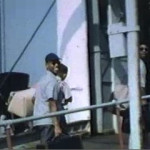
Scenes from Stanley Nelson’s “A Place of Our Own.”
Her own road to reaching that conclusion began — “both unconsciously and consciously,” she says, in her youth when she became fascinated by archival footage and in particular by documentary films that use amateur film. “When I was 16 years old,” she says, “I attended a screening of Stanley Nelson’s A Place of Our Own at PBS WNET in Buffalo, New York. It was the first time I ever saw African-American home-movie footage that was originally shot on film — 8mm and Super8, in this case.”
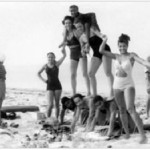 In that film, Nelson, the 2002 MacArthur Foundation Fellowship winner and Emmy Award-winning producer and director of the 2003 documentary film, The Murder of Emmett Till, depicts the generations of affluent African American families who spent summers at a New England town, Oak Bluffs.
In that film, Nelson, the 2002 MacArthur Foundation Fellowship winner and Emmy Award-winning producer and director of the 2003 documentary film, The Murder of Emmett Till, depicts the generations of affluent African American families who spent summers at a New England town, Oak Bluffs.
Castro, born and raised in Buffalo, New York, says the experience of seeing that depiction stayed with her, and she had the film bug, as was clear when she became the first student to direct a film as a talent for her high-school talent show. She then graduated in 2006 from the Toronto Film School with a diploma in film and television production. She has directed, edited, or worked as a crew member for several short films.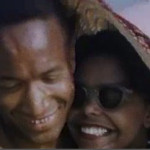
When she entered the Moving Image Archiving Program at NYU, “the topic of home movies came up again,” she says. She was seeing none that featured African-American families, “so it got me thinking, are there African-American home movies of everyday families and where can I find them?”
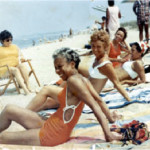 She did know that some exist – a few with her in them. “My dad recorded a lot of family events on VHS when I was kid,” she says. “However, my parents divorced when I was 12, and many of my home movies were lost or misplaced during the split. My father is a pastor and moved to Bermuda seven years ago to pastor a church. When he moved, my aunt placed a lot of his stuff in storage.”
She did know that some exist – a few with her in them. “My dad recorded a lot of family events on VHS when I was kid,” she says. “However, my parents divorced when I was 12, and many of my home movies were lost or misplaced during the split. My father is a pastor and moved to Bermuda seven years ago to pastor a church. When he moved, my aunt placed a lot of his stuff in storage.”
She has not yet had the opportunity to dig those up. “I should also mention,” she says, “that this ‘storage facility’ is my aunt’s garage in Buffalo. I’m sure the winters have ruined the tapes and they’re most likely worthless, at this point.”
She also will eventually obtain a couple of VHS tapes in her mother’s possession, and then “I have a whole lot of mini-DV tapes I recorded on all throughout high school” and is gradually digitizing those.
Her own collection has scenes of weddings, the opening of Christmas presents, activities in a school yard, families hanging out in their living room — which is to say, the usual kinds of family and everyday activities that nonetheless can be fascinating in their specifics and differences.
Castro has located in various archives films of a similar range of family and everyday activities. She began her search for those online, and “I was able to find a few digitized clips at places like the Internet Archive and Historic Films, a stock footage company outside of New York City. Once I started talking with people in the field of moving-image archiving, and directly emailing museums, libraries, and archives that I believed might have this type of material, that’s when I started finding out about collections I was unaware of.
“This is when I decided to focus on developing some sort of centralized database or registry that could bring all of this material together under one virtual roof.”
Among the archives and similar institutions Castro is working with as she tries to build her database are Northeast Historic Film, The Center for Home Movies, the Smithsonian National Museum of African American History and Culture, and Amistad Research Center. The Internet Archive has provided her with leads, too.
At the University of Chicago, Jacqueline Stewart, a professor of cinema and media studies, has for several years run the South Side Home Movie Project. She and collaborators are creating an online archive, oral histories, and public programs and working with people and organizations on Chicago’s South Side to locate amateur films and bring them out of private collections into public light.
Those, as the project’s online introduction says, “contain a wealth of information about the ways in which people have represented themselves and their views of the world. They show us how people dress and pose, work and play, travel and learn, celebrate and organize, raise their children and even mourn their dead. These films also jog memories, and incite conversations about people, practices, locations and events that are not always captured in official histories.”
The project archives digital copies, ideally leaving originals in family or community-organization care. The kinds of films that come to the project serve to reflect the South Side’s racial, ethnic, and class composition and a great variety of activities residents considered worth filming.
Stewart initiated the project in 2005. A magazine article reported in 2007 that she and her colleagues had by that point located 150 reels held by two dozen owners, and dated from the 1950s to 1970s. In her article in University of Chicago Magazine, Lydialyle Gibson explained that “although 16-mm film was introduced in 1923 and amateur film clubs began springing up soon after, home movies didn’t become common, or widely affordable, until the late 1940s.” As the amateur filmmakers of that time found their way into film schools or circles of documentary, independent, or experimental filmmakers, that “left home movies for ‘family stuff’: trips to the Grand Canyon, birthday parties, Little League games.” The sophistication of technologies used increased upon the return of World War II servicemen, who favored movie cameras when recording their families. By the 1980s, video cameras provided a handy medium; the results were, however, less stable and of lower quality, and the South Side Home Movie Project is not archiving those.
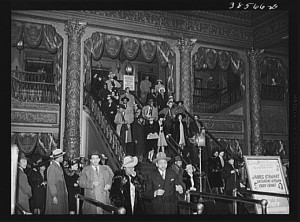
Lee Russell: “Crowd coming out of Regal movie theater. Southside of Chicago, Illinois” (1941). Library of Congress.
Stewart is also a curator of the L.A. Rebellion Preservation Project at the UCLA Film and Television Archive. And she is writing a study of the life and work of a pioneer African American actor, writer, and director Spencer Williams (1893-1969) — Andy in the Amos ‘n Andy television show and director of the 1941 “race film” The Blood of Jesus (aka The Glory Road).
Among areas of Stewart’s research into African American film cultures from the beginning of film to the present day is the racial politics of moving image archiving and preservation. In her Migrating to the Movies: Cinema and Black Urban Modernity, which the University of California Press published in 2005, she describes the beginnings of African American film within the context of the migration, at the same time, of hundreds of thousands of black Americans from the South to the urban North. Focusing on silent-era Chicago, the book was the first to look closely at the relationships of black urban life and cinema. By analyzing the evolution of African American film audiences as well as actors and producers, she suggests a mutual influence between involvement in cinema and a black urbanism that revolved around such institutions as churches, music clubs, and fraternal orders. She shows the importance for black urbanism and film history of the South Side of Chicago, with its many African-American theaters and several black-run film companies, including one operated by vaudeville and theater promoter William Foster that in 1913 produced the first film ever made by African Americans, The Railroad Porter.
She paid particular attention to African Americans’ responses to white-dominated Hollywood’s demeaning images of black Americans. However, Jennifer Carnig wrote in The University of Chicago Chronicle, “instead of writing off early films as simply ‘racist,’ she recovers a strength and influence that she says black moviegoers really had. Whether it was by creating a sense of community in all-black theaters, by boycotting offensive movies, or by financing and creating movies that dealt with issues of importance to some in the community, African Americans successfully intervened in racist patterns of the dominant culture, Stewart argues.”
Jasmyn Castro’s project seems in the same spirit. Her database will include several categories of information about films such as where and when they was made, where they are held, and how interested viewers can watch them. Then, where possible, Castro will include such “metadata” as the gauge, length, and state each item is in.
She says one goal of her project is to provide free, online access to her database while also giving users a sense of the historical and cultural significance of the films. Access would mean not only access to the metadata that the database will provide, but also, if possible, to the films, themselves. She says: “If the collecting organizations grant me permission, I would like to provide links to online access copies of these films if they are available.”
Not all the organizations that have relevant films have made digital access copies. Some are in the process of digitizing their material, now — for example, Amistad Research Center’s Mardi Gras films. (See, “Robert Green’s Mardi Gras Balls of the 1950s.”)
A second goal is to round off her recordings of information on the database with an exhibition of African American home movies in New York.
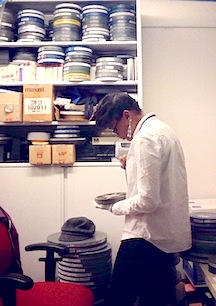
If you know of any collections or even smaller lots of home movies of African American families and individuals, Jasmyn Castro would love to hear from you via email at jrc623@nyu.edu.
It seems likely, however, that the end of her project may be just the beginning of a next phase of collecting of African American home movies — or, at least, of catalyzing collecting. She says: “I won’t be collecting material for the purpose of my thesis. However, I do actively collect African-American home movies when I can. I will be including myself in the database/registry as a private collector.”
Of course, how many other people have collections, whether of their own families’ films, or others, would be hard to gauge but “if I can somehow get in touch with some of them, and they are willing, I would like to include them in the database as private collectors so that material is accounted for,” Castro says. “I do realize this is a bit tough to do, so only time will tell…”
If her project has the effect of encouraging more families to place them in archives, it may be just the beginning of a next, fruitful phase of collecting of African American home movies.
Castro says: “I believe this resource will be of great use to both documentary and feature filmmakers, students of all ages, other moving image archivists, researchers, scholars and enthusiasts. These home movie collections can provide a more accurate depiction of African-American culture and activities, while also supplying a diverse representation of a minority group that was often recorded or filmed in the context of slavery, segregation, civil rights, the black power movement and race relations.”
— Peter Monaghan
Printed from Moving Image Archive News: https://www.movingimagearchivenews.org
URL to article: https://www.movingimagearchivenews.org/african-american-home-movies-are-they-out-there/
Click here to print